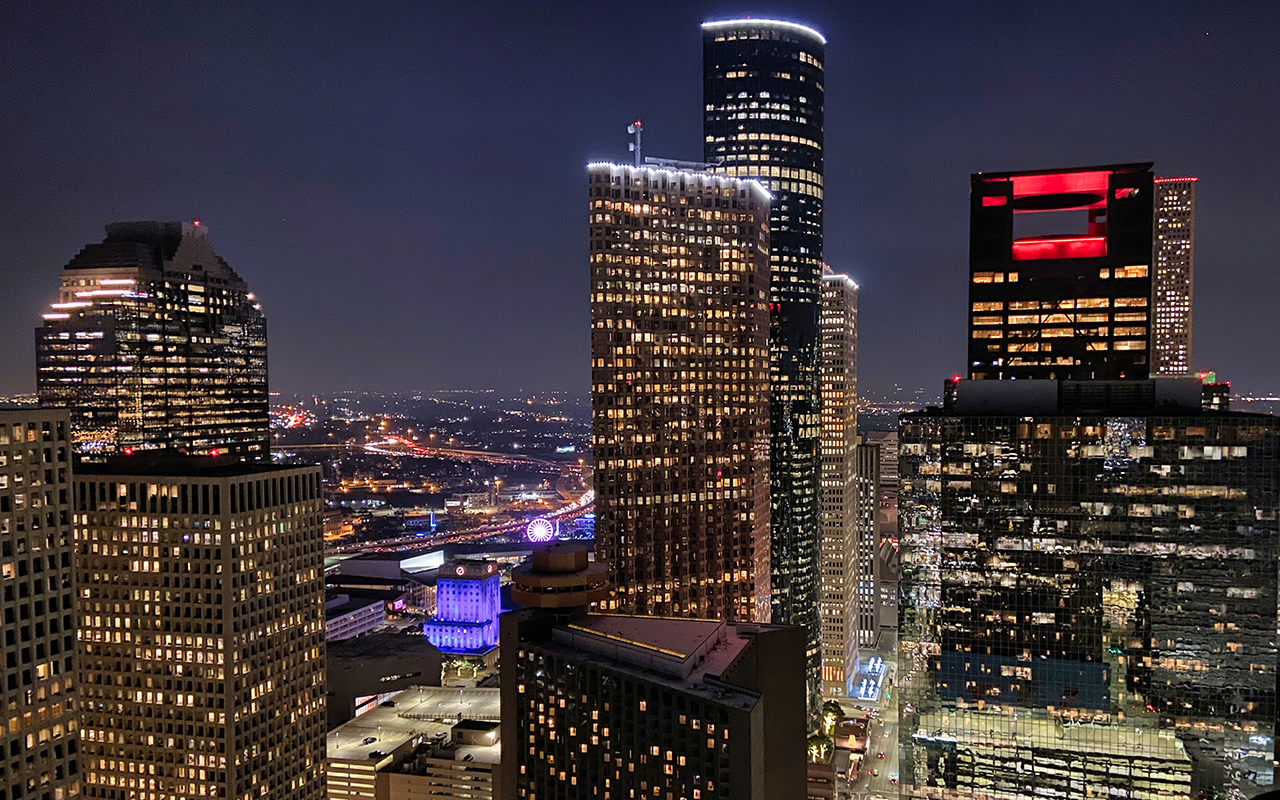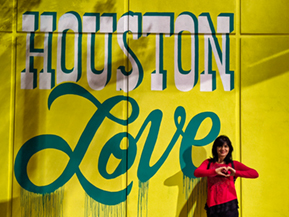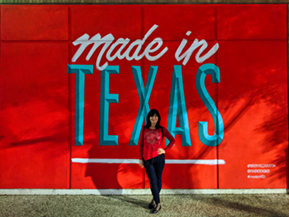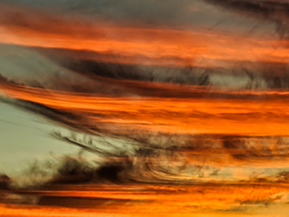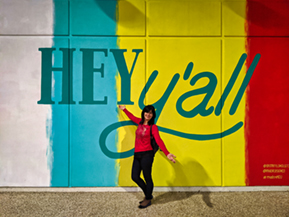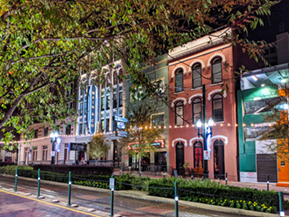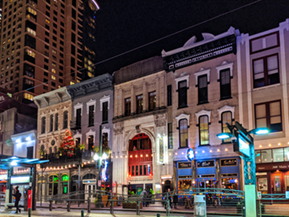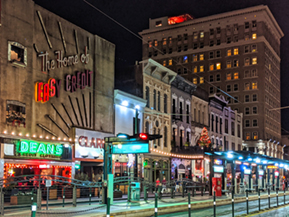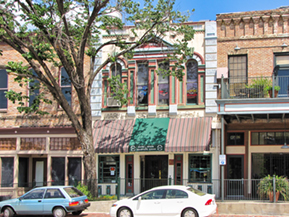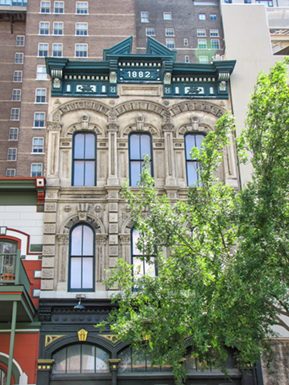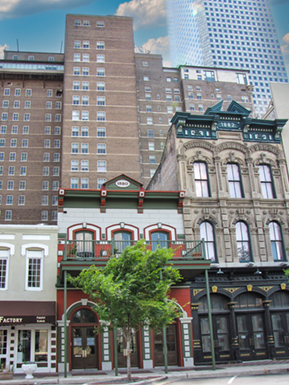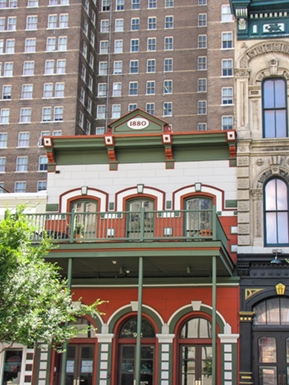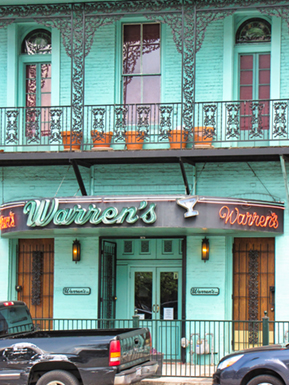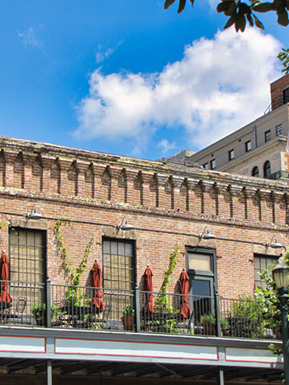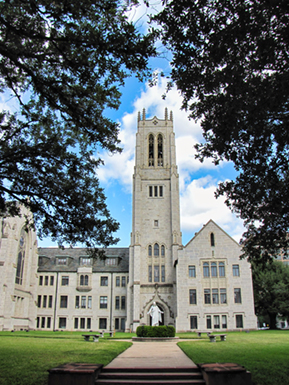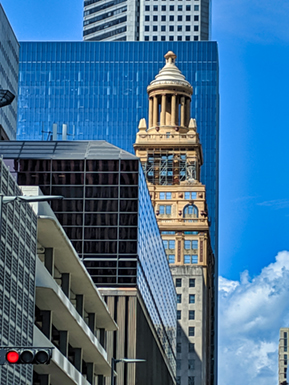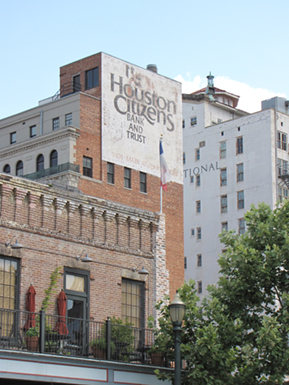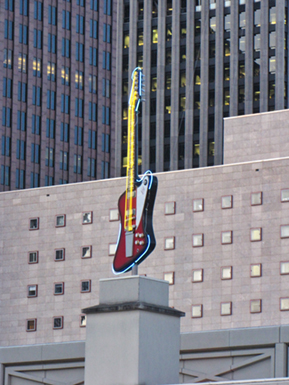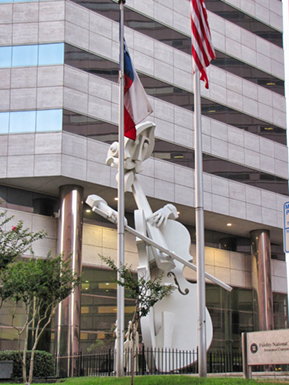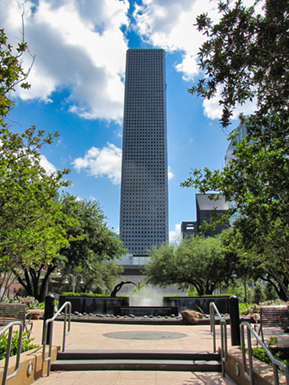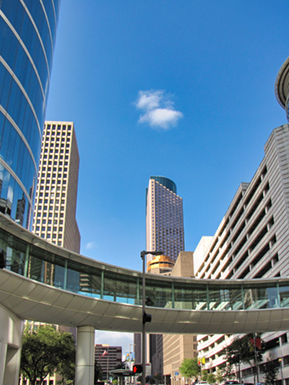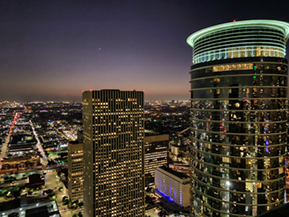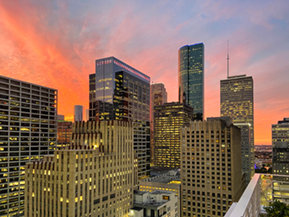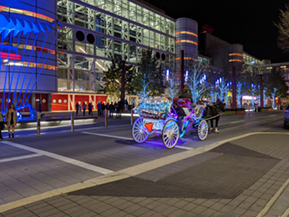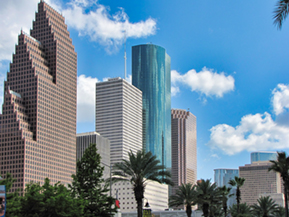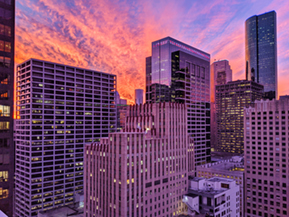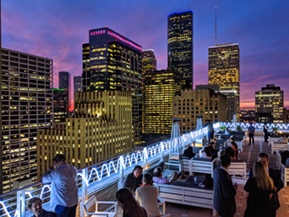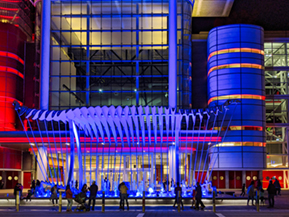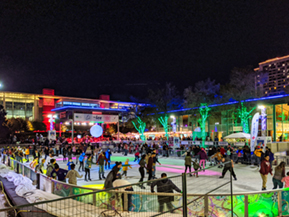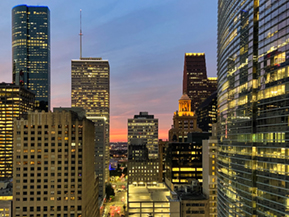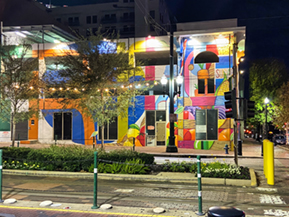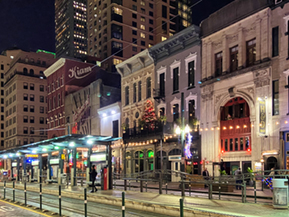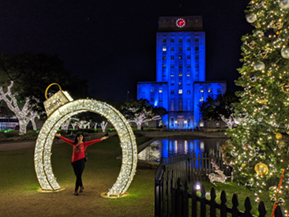About Houston
The City of Houston was founded in 1837 after Augustus and John Allen had acquired land to establish a new town at the junction of Buffalo and White Oak bayous in 1836. Houston served as the temporary capital of the Republic of Texas. Meanwhile, the town developed as a regional transportation and commercial hub.
The city is named after former General Sam Houston, who was president of the Republic of Texas and had won Texas’s independence from Mexico at the Battle of San Jacinto 25 miles (40 km) east of Allen’s Landing.
Houston was part of an independent nation until 1846 when the United States formally annexed Texas. Railroad development began in the late 1850s but ceased during the American Civil War. Houston served the Confederacy as a regional military logistics center. The population increased during the war and blockade runners used the town as a center for their operations.
The population surpassed 58,000 in 1900, the same year as the Great Hurricane struck Galveston. Within a few years, oil companies were establishing offices in Houston to administer oil fields in East Texas. In 1912, the Rice Institute opened its doors on its suburban campus, the first institute of higher learning in the Houston area. Several tall buildings were completed that year, including those used for offices and residences.
10 Interesting facts About Houston
⋄ Residents in Houston eat out more times a week than in any other city in America. The average meal costs less than the national average, or it can be because Houston has some of the most delicious foods and restaurants.
⋄ Houston has one of the best culinary scenes in the country.With more than 10,000 restaurants, which represent more than 70 countries and American regions, to choose from, Houston is considered as one of the best food scene. From food trucks to ramen places to healthy choices, Houston has it all. (This is probably why Houstonians eat out more.)
⋄ It is home to the largest medical center in the world. The Texas Medical Center is located in Houston and contains 54 medicine-related institutions. The medical center exceeds 1,000 acres and gets an average of 7.2 million visits per year. That’s more than the populations of Los Angeles, Houston and San Francisco combined.
⋄ Houston has an underground pedestrian tunnel system. The tunnel is 20 feet below the ground and runs for seven miles, linking 95 city blocks.
⋄ The Houston Livestock Show and Rodeo is one of the biggest rodeos in the world. This month-long rodeo attracts over 2.5 million attendees each year.
⋄ Houston is home to Texas’ largest shopping mall. The Houston Galleria, or just The Galleria, opened in 1970 and is the largest mall in Texas, with over 375 stores filling the four floors.
⋄ It is the fourth most populous city in the nation. Houston has about 2.3 million residents, making it the largest city in Texas and in the South. The big Texas city trails behind New York, Los Angeles and Chicago when it comes to population.
⋄ More than 145 different languages are spoken in Houston Houston has the third largest number of languages spoken in the U.S. behind New York and LA. While Spanish and English are prevalent in the area, you will hear people speaking many other languages.
⋄ It is also home to the world’s first domed stadium. The Astrodome opened in 1965 and served as a second home to the Houston Astros. It’s the world’s first multi-purpose domed sports stadium. Currently, the dome is not in use.
⋄ J.P. Morgan Chase Tower is the tallest five-sided building in the world. The J.P. Morgan Chase Tower is Texas’s tallest building and the world’s tallest five-sided structure.
Arts & Culture
Houston is internationally recognized as a performing and visual arts mecca with hundreds of institutions across the region dedicated to artistic expression through a multitude of mediums. Whether you’re looking for a night at the theater or an afternoon exploring one of the city's many museums, here’s a guide to some of the leading organizations setting the tone for artistic expression in the nation’s most diverse city.
⋄ Theater District: Houston is one of a few cities in the United States that can boast major symphony, ballet, opera, and theater companies of worldwide acclaim. The downtown Theater District which includes the Alley Theater, Jones Hall, the Hobby Center, and the Wortham Center, is the vibrant heart of the city’s tremendous cultural assets. Thanks to the Society for the Performing Arts, Houstonians routinely have access to some of the world’s best musical, dance, and theatrical talent.
⋄ Museum District: Houston’s renowned Museum District lies just south of downtown, near Hermann Park, the Texas Medical Center and Rice University. A dynamic testament to the city’s commitment to the visual arts, the district offers something for everyone—with special touring exhibits throughout the year.
⋄ Performing Arts Beyond the Theater District: Outside of Houston’s Downtown Theater District, you’ll find numerous other performing arts companies producing regular theatrical and musical performances.
⋄ Museums Beyond the Museum District: Many visual arts and other museums and attractions are scattered throughout metro Houston, showcasing the history, culture and artistic expression of the region.
⋄
Houston 1950-s:
Texas Medical Center became operational in the 1950s. The Galveston Freeway and the International Terminal at Houston International Airport (nowadays Hobby Airport) were signs of increasing wealth in the area. Millions of dollars were spent replacing aging infrastructure. In 1951, the Texas Children’s Hospital and the Shriner's Hospital were built. Existing hospitals had expansions being completed. July 1, 1952 was the date of Houston's first network television. Later on that same year, the University of Houston celebrated its 25th anniversary.
Houston 1960-s:
In the year 1960, Houston International Airport was deemed inadequate for the needs of the city. This airport could not be expanded, so Houston Intercontinental Airport (now George Bush Intercontinental Airport) was built north of the city. September 1961 saw Hurricane Carla, a very destructive hurricane, hit the city. On July 4, 1962, NASA opened the Manned Spacecraft Center in southeast Houston in the Clear Lake area, now the Lyndon B. Johnson Space Center. This would bring many jobs to the Houston, especially the Clear Lake area. In April 1965 the Astrodome opened, under the name of the Harris County Domed Stadium. In July 1965, the Houston Metropolitan Area was expanded by the inclusion of Brazoria County, Fort Bend County, Liberty County, and Montgomery County. AstroWorld, a theme park adjacent to the Astrodome, opened in 1968. Houston Intercontinental Airport was built in 1969. The word Houston was the first word said on the moon by American astronaut, Neil Armstrong, July 20th 1969.
Houston 1970-s:
In the 1970s, the Chinese-American community in Houston, which had been relatively small, started growing at a rapid rate. Because the Houston Independent School District was slow to desegregate public schools, on June 1, 1970, the Federal officials struck the HISD plan down and forced it to adopt zoning laws. Racial tensions over integration of the schools continued. Some Hispanic Americans felt they were being discriminated against when they were being put with only African-Americans as part of the desegregation plan, so many took their children out of the schools and put them in huelgas, or protest schools, until a ruling in 1973 satisfied their demands The Third Ward became the center for the African-American community in the city. By 1979 African Americans were elected to the City Council for the first time since Reconstruction. During the time period, five African Americans served on city council. The late 1970s saw a population boom thanks to the Arab Oil Embargo. People from the Rust Belt states moved into Houston, at a rate of over 1,000 a week, mostly from Michigan, and are still moving to Houston to this day.
Houston 1980-s:
In 1981, Kathryn J. Whitmire became the city’s first female mayor, holding that position for 10 years; after she left office, term limits were enacted to prevent future mayors from serving for more than 6 years. Several new construction projects, including The Park Shopping Mall, the Allied Bank Tower, the Gulf Tower and several other buildings were being carried out in downtown. The Transco Tower, the tallest building in the world outside of a central business district, was completed in 1983. METRO wanted to build a rail system connecting the city with the suburbs, but the plan was rejected by voters on June 11, 1983. Voters did, however, approve plans for the George R. Brown Convention Center. Houston’s massive population boom was reversed when oil prices fell in 1986, leading to several years of recession for the Houston economy. The space industry also took a blow that year with the Challenger disaster in Florida. The first nine months of 1987 saw the closure of eleven banks, but also the opening of several cultural centers including the George R. Brown Convention Center, the Wortham Theatre, and the Menil Collection.
Houston 1990-s:
1990 saw the opening of Houston Intercontinental Airport’s new 12-gate Mickey Leland International Airlines terminal, named after the recently deceased Houston congressman. The master-planned community of Kingwood was forcibly annexed in 1996, angering many of its residents. The annexation put Kingwood in the jurisdiction of Houston's fire and police services, but it did not alter school district boundaries nor did it change postal addresses and postal services. Rod Paige became superintendent of Houston Independent School District in 1994; during his seven-year tenure the district became very well known for high test scores, and in 2001 Paige was asked to become Secretary of Education for the new George W. Bush administration. Lee P. Brown, Houston’s first African-American mayor, was elected in 1997.
Twenty-First Century:
The city built Enron Field (now Minute Maid Park) for the Houston Astros. Reliant Stadium, now NRG Stadium, was erected for the NFL expansion team Houston Texans. Tropical Storm Allison devastated many neighborhoods as well as interrupted all services within the Texas medical center for several months with flooding in June 2001. In October 2001 Enron, a Houston-based energy company, got caught in accounting scandals, ultimately leading to collapse of the company and its accounting firm Arthur Andersen, and the arrest and imprisonment of several executives. In 2002, the University of Houston celebrated its 75th anniversary with an enrollment of 34,443 that fall semester. At the same time, the University of Houston System celebrated its 25th anniversary with a total enrollment of over 54,000. The Toyota Center, the arena for the Houston Rockets opened in fall 2003. METRO put in light rail service on January 1, 2004. Voters have decided by a close margin (52% Yes to 48% No) that METRO’s light rail shall be expanded. In 2004, the Mayor of the city was Bill White and Houston unveiled the first Mahatma Gandhi statue in the state of Texas at Hermann Park. In the aftermath of the Hurricane Katrina disaster, about 200,000 New Orleans residents resettled in Houston. Soon following Katrina was Hurricane Rita, a category 5 hurricane which caused 2.5 million Houstonians to evacuate the city, the largest urban evacuation in the history of the U.S. In January 2010, Annise Parker became the first openly gay mayor of a large American city upon her inauguration as Houston’s mayor. Memorial Day storms in 2015 brought flash flooding to the city as some areas received 11 inches or more of rain overnight, exacerbated by already full bayous. At least three people died and more than 1,000 cars were stranded on highways and overpasses. In April 2016, historic flooding came to Houston which has killed 5 people. In August 2017, Houston experienced record flooding as a result of Hurricane Harvey.
Space Center Houston
Space Center Houston, the $75-million Disney-designed visitors’ center for Johnson Space Center, opened in 1992 and attracts more than one million visitors per year. It features an IMAX theater, live demonstrations, Apollo, Mercury and Gemini capsules, a space suit collection and one of the largest collection of moon rocks. Visit website.
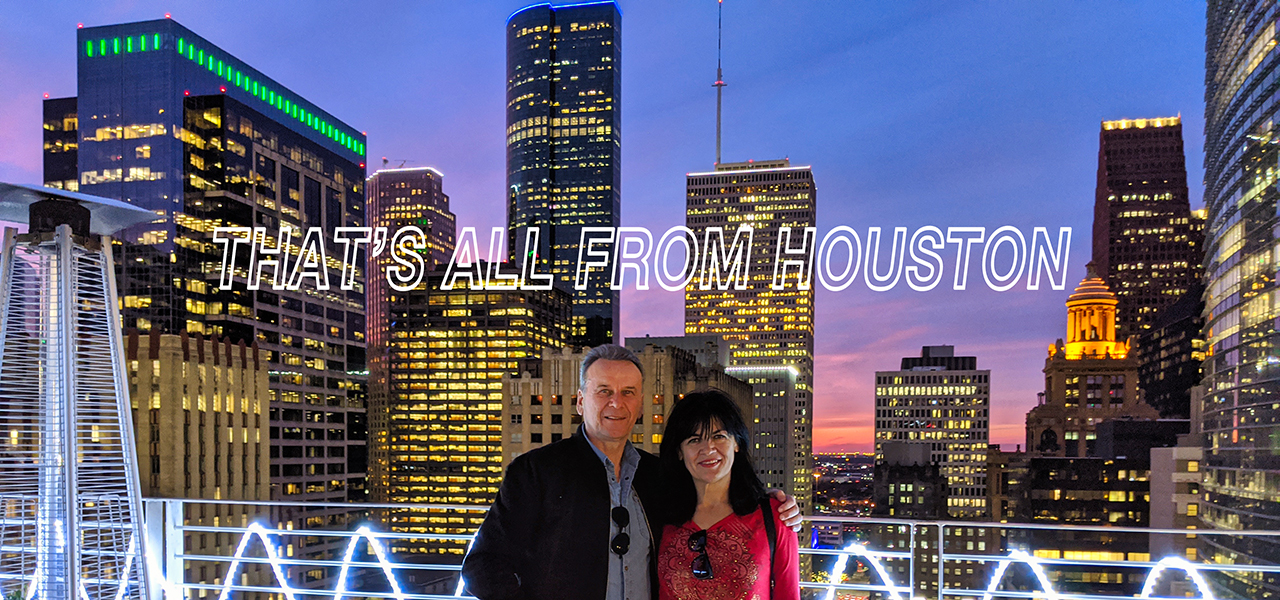
Next page: Austin

